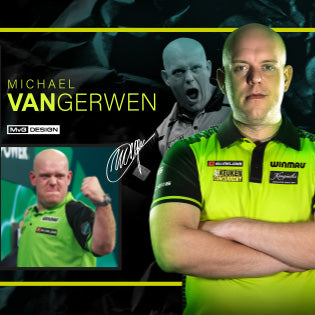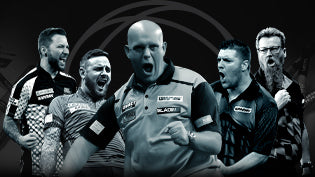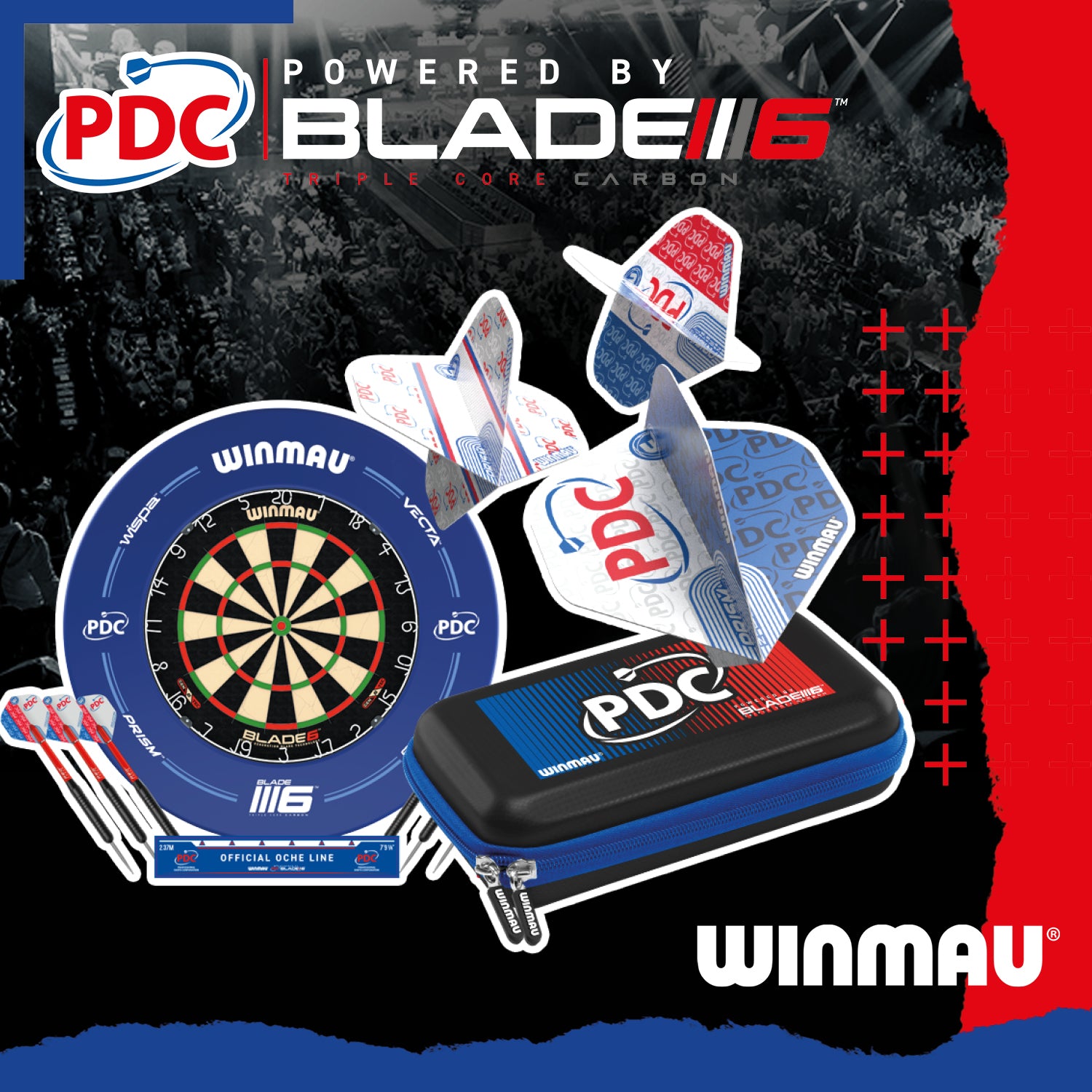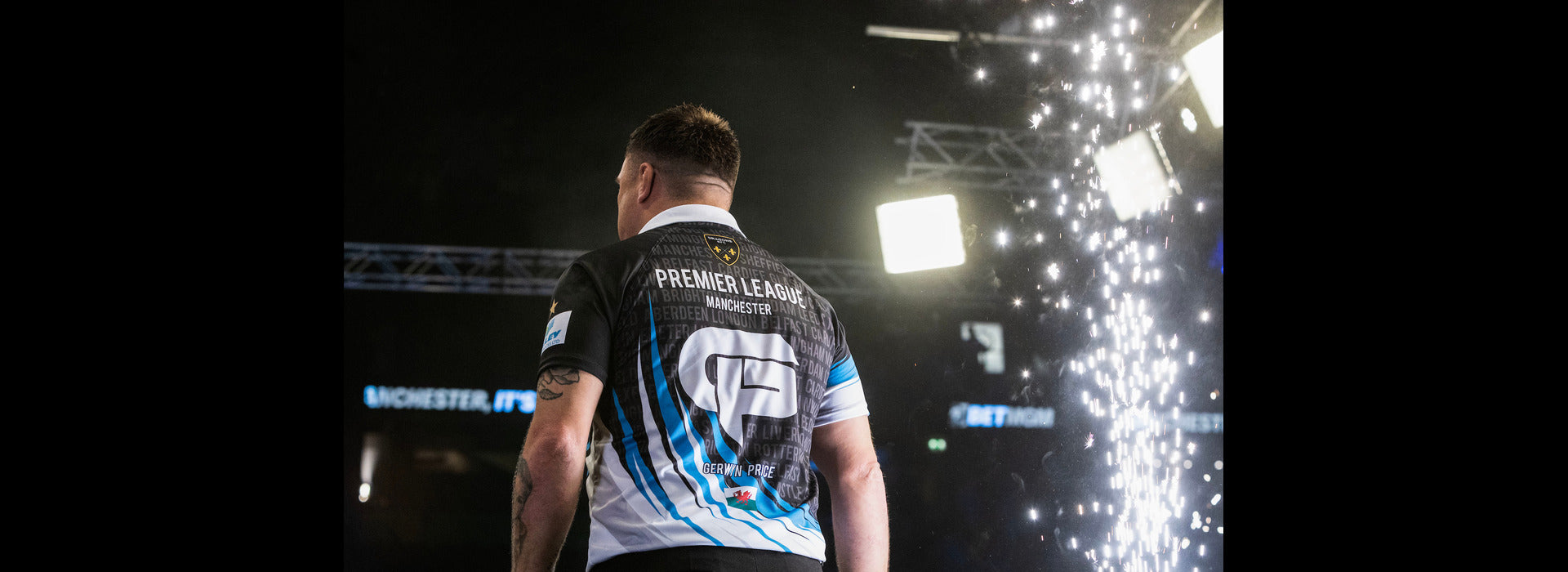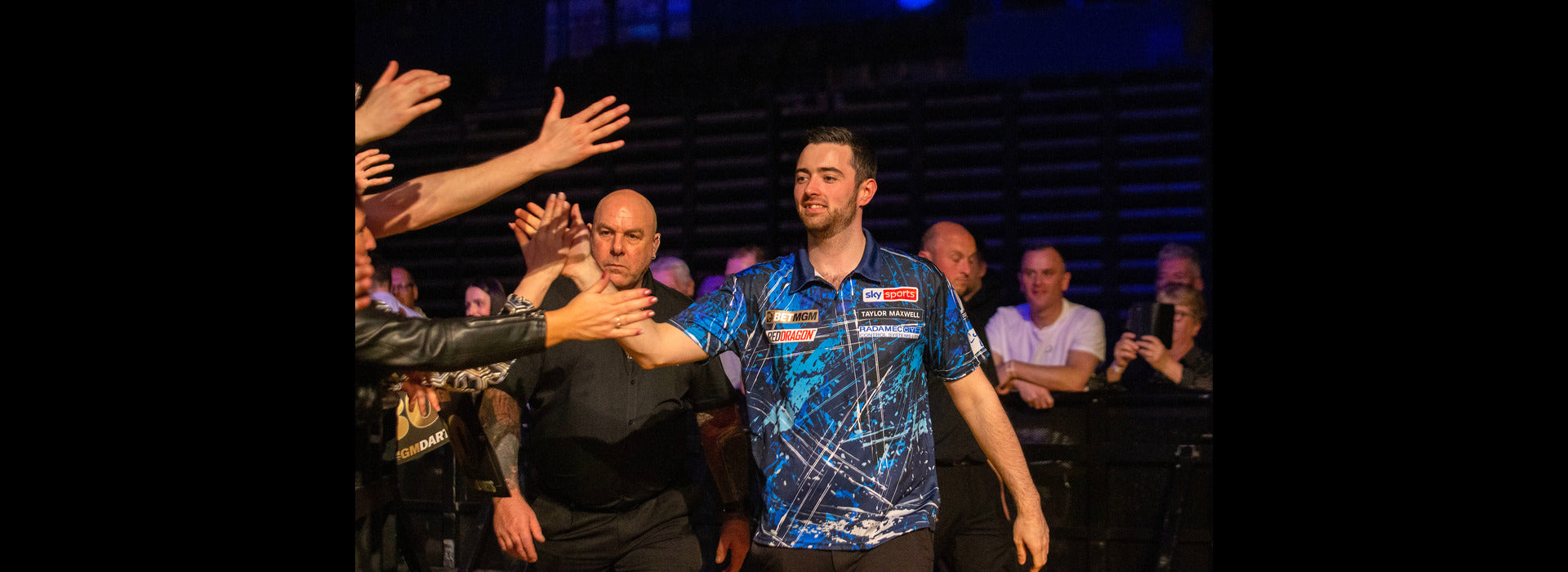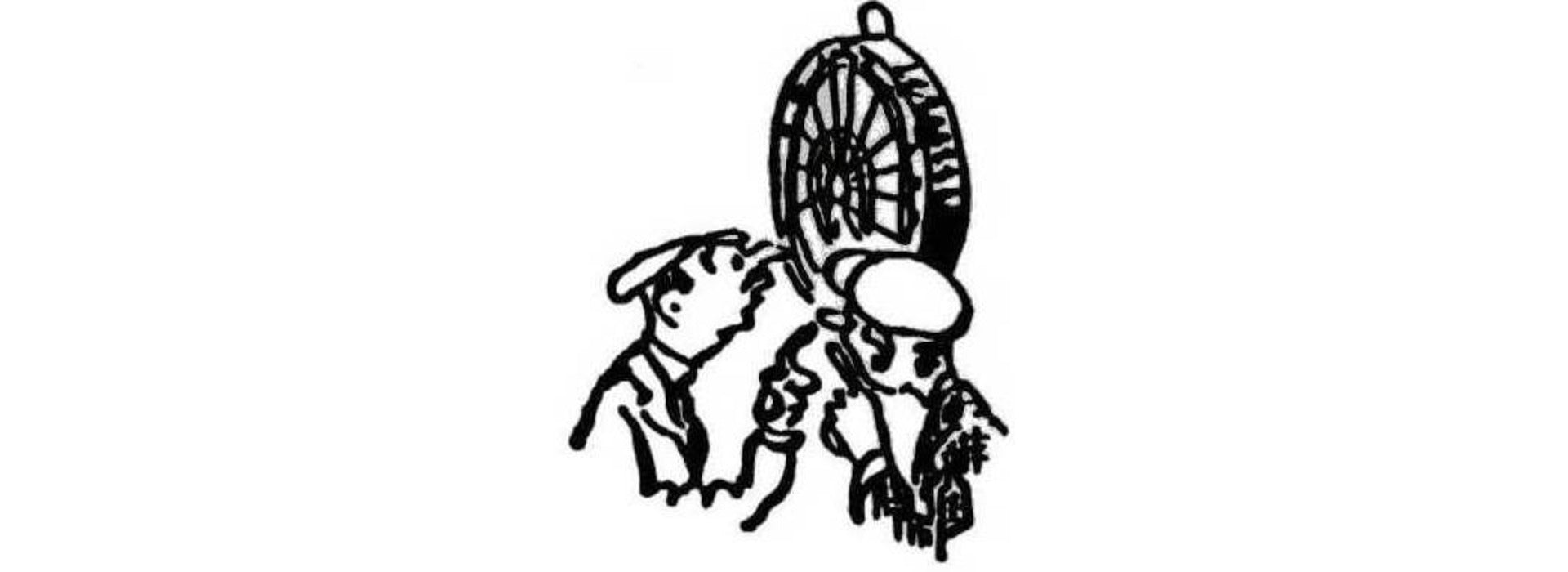
DR DARTS NEWSLETTER - PATRICK CHAPLIN - APRIL'24 EDITION

DICK ALLIX – CO-FOUNDER OF THE PROFESSIONAL DARTS CORPORATION PASSES AWAY
Far too many people who helped forge darts into the way it is today are passing away and the latest one to join the players, managers, and organisers toeing the oche/hockey in the sky is Dick Allix. (Dick is pictured right (on the left) at Lakeside in 1992 with fellow founder of the then World Darts Council (WDC), Tommy Cox. (Image © PC) Tommy was later asked by the BDO officials to remove his WDC badge. I’m not sure he did.)

I first met Dick at the Circus Tavern, Purfleet, having been invited by him and Tommy Cox to attend the first, and a number of subsequent WDC, later PDC, World Championships at that Essex venue. Both Dick and Tommy helped me a lot during those early years during which I wrote history articles for the PDC website and occasionally for PDC championship programmes. Whilst I pay my respect to Dick in this introduction, I have obtained the approval of the Professional Darts Corporation (PDC) to reproduce their formal announcement/tribute to Dick here. (The photograph, left, shows Edward Lowy presenting Dick with his award for having earned a place in the PDC Darts Hall of Fame at the Dorchester, London in 2010. (Image © PDC. Used with permission.))

The Professional Darts Corporation is deeply saddened to learn that Dick Allix, one of the organisation's founders, passed away on 13th March 2024
Dick Allix, along with Tommy Cox and John Markovic, were instrumental in the formation of the World Darts Council in 1992 as the sport's top players broke away from the BDO to form a new era for the sport.
Allix, who had been a player manager at that time, became the WDC's chief executive and later moved into the role of event director following the PDC's subsequent restructure in 2001. Following his retirement from the PDC in 2014, Allix continued in management and had worked alongside commentators Wayne Mardle, Rod Studd, and Dan Dawson in recent years. He had initially moved into management with Eric Bristow during the five-time World Champion's hey-day, and also represented the iconic Sid Waddell.

(The image, right, shows Dick’s promotional advert in Darts World issue #97, December 1980 featuring Eric and ladies’ champion, Maureen Flowers.)
Allix, 78, originally rose to fame as the drummer in Vanity Fare, who enjoyed the hit song "Hitchin' A Ride' - which sold over a million copies in America in 1969.
He was inducted into the PDC Hall of Fame alongside Cox in 2010 to recognise his contribution to the sport.
"We send our deepest condolences to Dick's family and friends at this sad time," said PDC chief executive Matt Porter.
"Dick made an immense contribution to the sport across five decades and was instrumental alongside Tommy Cox and John Markovic in harnessing the vision to create a new future for darts.
"He held a number of roles within the sport and saw that vision come to fruition, and we know how proud he was to see the PDC go from strength to strength.
"He will be sadly missed by us all."
In 2017, Dick Allix spoke about the formation of the PDC as we marked 25 years since the organisation's first tournament, the 1992 Lada Masters.
"I've got immense pride," said Allix in '25 Years On - The Split'. "To me the whole ethos was that if you were good enough, you'll play and I think the PDC stands for that today. We only ever promised the players that we would get it back to where it was, but I think we more than surpassed that. People still say that they never envisaged that it would get this big, and it still seems to get bigger and bigger and that's staggering.
"Cliff Lazarenko always said that if it worked and we succeeded in where we were going, he wouldn't benefit – although those 14 players did later get given shares - but he was glad that he had done it so that future players would reap the rewards."
(Dick Allix - b. 03.05.1945 d. 13.03.2024) RIP Dick
CATCHING UP – FEEDBACK FROM RECENT ISSUES
The St. Dunstan Four
From Canada John T. writes
‘Thanks for your last and very interesting issue Patrick. A very long time ago l had the privilege of a tour of St. Dunstan’s and watched the sightless demonstrate how they played darts. I cannot remember how they did it. Perhaps you know more about it. They were good. Keep up the good work.
I replied
Hello John. … Yes. You’ve reminded me that although the St. Dunstan’s Four were, of course, sighted, they did often bring blinded ex-servicemen with them to show punters how the blind could still play darts.
At the back of my brain I seem to recall that sometimes a length of string was used, with one end pinned into the bull, the other held in the non-throwing hand of the blind thrower.

Since writing to John I have been unable to find any information relating to the ‘length of string’ theory and the St. Dunstan Four, but did come across an article from an issue of the Daily Mail in October 2014 which I mentioned in DDN #54 – November 2014.
As you can see from the cutting (above) Richard Pryor, who created what was believed to be the first blind darts team in Britain, named The Optimists, shows how it’s played. Called The Optimists, the Mail reporter confirmed the methodology:
‘They guide their darts with a piece of string attached to the bullseye which helps them feel where the board is. The player grabs the string with their spare hand and throws with the other.’
Before tungsten
Rob G. wrote
Patrick. I look forward to your regular publication. I’m of an age that remembers a lot of what you report on and I enjoy the reports, though some of them are well before my time but I love the period of “brass” darts because I started with the old brass darts and was one of those fortunate to transition to the copper tungsten darts and later to the various elements of tungsten darts. [Part of the ‘transition’ period is indicated on the next page: An advert featured in the April 1978 issue (# 65), of Darts World featuring the George Walsh copper tungsten dart.]
Most of the darts now is probably “documented” and can be found [online] but it doesn’t seem the same as somebody like yourself pulling it together as a publication with interesting fact notes, etc. Maybe that’s a good thing because darts has grown so big that it would take many of your persuasion to pull it all together.
That my friend is a testament to you for what you have done on a regular basis that (many) people would struggle to follow. Thank you for all your contributions.
I replied
Thanks Rob. I really appreciate your feedback and kind comments about my work. I do my best and try to ensure that anything I publish to my subscribers is as accurate as possible.
The way in which darts history has been distorted since the introduction of the internet is frightening

How do I come up with articles for Darts History?
Mick Simpson wrote
Patrick. Thanks again for your Darts History brilliant read. I never knew tungsten darts were first made in the 1960s. What a clever man to sort the best way to make tungsten darts by adding copper. Brilliant.
I sometimes wonder to myself. Do you sit there and think to yourself “What should I write about next?” Well, I can tell you, however you sort it, blimey it works. Thanks again for a fantastic read.
I told Mick
Thanks for your feedback, as always. How do I do it? Good question.
I just keep going. I have so much information in my archive/office/second bedroom full of stuff collected over 35 years that I usually sit (as you suggest) and think “What’s next?” and other ideas spring to my mind. Then I research that thread and see where it leads. I use the same method when I write articles for Pub History, the quarterly journal for the Pub History Society [www.pubhistorysociety.co.uk.] And, of course, I often receive questions and queries from Darts History readers and from my website.
Brian H wrote
Morning Patrick. Once again, thanks for another great read in your latest offering.
Fascinating that darts was televised so early on & yet it took so long to become a regular feature. Sad to see the loss of more personalities from the game but as always, satisfying to see their contributions are recognised & not forgotten in your publication. Take care.
It is indeed so sad that we are losing so many of those involved with darts, especially those who were there in the early 1970s, helping the sport to become recognised as a legitimate activity and worthy of TV attention.
Elkadart – Ben Drake and other trailblazers
Eddie Norman emailed to say
Hi Patrick. Thank you for Darts History… Just to say a little tardy but I really enjoyed the Ben Drake article, I knew Elkadarts so well, and, of course, Cyril Hayes (RIP), (pictured below, left) (Image © DW/PC Archive) who was a great friend of mine who played for me in my West of England team and worked for Ben. Ben was a wonderful character.
I basically grew my business on Elkadarts along with Tom Pope (RIP). Ben and Tom were absolutely fantastic people to the darts business.
So sad so many old faces are sadly passing, I knew Dick Allix and Tony Green very well and it sort of gives you that feeling that one is not invincible as we get older.
What a darts history they, and others like them, left for the younger ones of today who have taken the place of those founding fathers of the darts industry.

GEORGE SILBERZAHN AND HIS DARTS TRAINING BOOKS
‘Dartboard Fans’ from the USA wrote on my website where I had written a review in 2008 of George Silberzahn’s second edition of his How to Master the Sport of Darts. ‘DF’ wrote:
Thank you very much for the information about George's writings. However, the number of books written about the Darts is very insignificant. Still, his book will be very useful for newcomers to the game. I hope many people will come forward to write a more complete book, thinking about the fans of this game.

I replied to DF pointing out that, of course, there have been and are many, many, many, books about darts, a good number published in the US since the late 1970s and that I also wrote one especially for the US market in 2010, titled The Official Bar Guide to Darts, published by Sterling, NY.
And, of course, I also mentioned that my latest/last book about darts, published here in the UK in 2012, was/is Darts. Skills. Tactics. Technique. is still available.
DARTSIGHT RE-LAUNCH
Many of my early subscribers may well recall that in the February 2014 issue of Dr. Darts’ Newsletter (#45) I publicised/reviewed the Dartsight, a small plastic device, (shown left) devised by brothers David and Stuart Needham of Oldham. It fits on the player’s finger and is lined up with the target on the dartboard, using the alignment systems. The DartSight Sighter can fit any hand and anchors the player’s aiming position while lining up the launch and follow-through of the dart. Stuart said, “A player’s muscle memory eventually does the rest when the sighter is removed for a game.”

The brothers are now set to relaunch the Dartsight.
Stuart told me, “We’ve included a lot of information and advice and practice exercises and demonstration videos in our Tutorial section on our web site www.dartsight.com” Take a look. I wish Stuart and David well with the relaunch.
DARTS LANGUAGE AND BINGO LINGO
In 1946, author John Moore produced his book Brensham Village which included one chapter titled Part Three – The Darts Players which included a section called The Language of Darts in which he explained to his readers that, if they knew nothing about the game, they would have had a job understanding the talk of the darts players in the bar. Moore explained:
‘For darts has its own esoteric terminology, some of which is common to the whole country and some of which is probably local. It is a language of association, with a bit of rhyming slang mixed up in it.’
More than four decades later, Richard Holt was one of a very few sports historians who bothered to mention darts in his research, mainly because many of his colleagues regarded, and to this very day consider, darts as a pub game, a pastime and little else. Certainly not a sport. In his book, Sport and the British – A Modern History (Oxford: Oxford University Press, 1989) Richard declared darts lingo to be ‘a good example of the power of popular culture to create private language for player.’ One of the academics to do so.
Much of the language of darts (the ‘lingo’ heard on the oche/hockey) are commonplace (such as ‘two and six,’ for 26, or ‘top of the shop’ for double 20, whilst other examples, as Moore and Holt observed, are heard only in a specific area or even a specific pub.
An example of the latter was the call ‘Wantz Road’ when the number forty-three was hit in any match in my former local the Blue Boar, Maldon, Essex during the 1980s. Number 43 was the number in Wantz Road (a short walk away) where one of our players lived. Therefore, it was not surprising that, when either 41 or 45 were scored, he was heard to cry “Next door neighbour!
In Hornsey, north London, when an 11 was hit back in the day in the pub, the cry ‘Lumbs!’ has called: Lumbs being the number of the pawnbrokers in the High Street.
This all brings me to an enquiry I received recently.

In that enquiry I was asked about any link between the language used both in the game of darts and the game of Bingo.
I was able to confirm that, over the years, some aspects of ‘bingo lingo’ had been embraced by darts and that most of the language used on the oche/hockey since the early days had been included in my unpublished book HOCKEY! OCHE! OCKY! – The Bulls Hitters Guide to the Language of Darts which I wrote in 1986. (See proposed front cover design, right. © PC and Chip.)
It remained unpublished until 2011 when the bulk of it was included in Scoring for Show, Doubles for Dough – Bobby George’s Darts Lingo, the book I co-authored with Bobby.
The enquirer then produced a cutting from a Frome (Somerset) newspaper from 1923 and I had to admit that I had not seen any reference to the ‘lingo’ that far back. Although the report was headed ‘FROME DART LEAGUE – WAGON AND HORSES RECEIVE A SETBACK,’ my attention was drawn to the following part where the ‘lingo’ we know today was called ‘calls’ back then. The news reporter known only as ‘O.B.E.’ wrote
‘I have been asked by a couple of Bath gentlemen who witnessed a recent dart match to give them the definition of certain “calls” or slang used in the game in this district. The following are a few of the principal ones –
Single one. Kelly’s Eye; double one. double ‘eck; round robin, no score; single three, on a spree; double three, O.B.E.; double nine, doctor’s cure; double seven, in heaven; double eleven, legs eleven; double five, boxing gloves; 26, 2/6 [old coinage two shillings and sixpence – called ‘Two and six’]; double 8, hymn of hate; 22, ducks on pauny [Possibly a local word for ‘pond’?]; double 20, top of the bungalow; 66, clickety-click; 80, eight holes; 88 Connaught Rangers; 99, the Wilts; middle for diddle, bullseye; hot, too many; each-a-piece, two opponents requiring the same score; stingo, beer; jammy, lucky; bird in the bush, game in hand; game shot, game correct.
I hope this will be sufficient for them to memorize for the present, and trust the date is not far distant when matches (home and away) will be arranged between Bath and Frome.’
My research into the previously unknown ‘calls’ continues. I have written to a contact ofmine in Frome, Mick Davis, the co-author of The Historic Inns of Frome (2022), in the hopehe would be able to assist me with the local lingo, including ‘pauny, ‘the Wilts,’ and others.
Finally, for the moment, many of you may recall that I wrote a chapter in my book 180! – Fascinating Darts Facts (2012), pages 60-65 called ‘Language of Darts’ which included a number of popular, local, and recent ‘new’ discoveries, bringing, for the moment, the dictionary of darts lingo up to date. (The book is still available…)
- DARTS ON TV (A REPEAT BUT WITH NO REPEAT FEE)
On Easter Sunday, BBC4 ran repeats of four programmes relating to pubs and darts; two of which I was involved with, namely Bullseyes and Beer – When Darts Hit Britain and Jocky Wilson Said. The guys from the BBC Timeshift series came to my house in 2019 for the ‘Jocky’ programme and interviewed me at length and featured many items, photographs, programmes, and newspaper cuttings from my collection. (See DDN #108 – March 2019.)

Jocky Wilson Said is also available on YouTube.
The screenshot above, shows me ‘at work’ in my archive during the recording of the programme. My friend, Patrick Dee, who you probably all know as ‘The Curator of Darts,’ was also credited.
NOTE: My feature on Darts on TV (1950s – 1960s) will continue in the May issue of Darts History.
MY RESEARCH IS SPONSORED BY

NOTE: Text © 2024 Patrick Chaplin or as shown. Images © Patrick Chaplin or as stated or sourced. Neither text nor images can be reproduced without prior permission of the copyright holder(s). Sponsors website: winmau.com.





